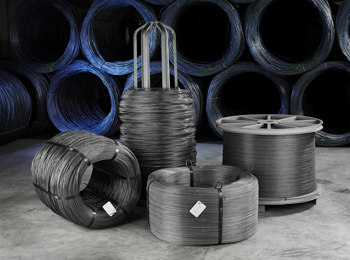nóv . 06, 2024 23:42 Back to list
Design and Construction Techniques for Gabion Wall Structures in Landscape Architecture
The Gabion Wall Structure An Innovative Approach to Erosion Control and Landscape Design
In recent years, the gabion wall has emerged as a highly effective solution for various civil engineering and landscaping challenges. Gabions, which are essentially cages or boxes made of wire mesh filled with rocks, stones, or other materials, are lauded for their durability, flexibility, and eco-friendliness. This article explores the structure, advantages, and applications of gabion walls, shedding light on why they have become a popular choice for erosion control, landscaping, and architectural projects.
Structure and Composition
A typical gabion wall consists of several key components. The wire mesh, usually made from galvanized steel or PVC-coated wire, serves as the outer framework, ensuring stability and containment of the fill material. The fill material can vary significantly, ranging from natural stones and boulders to recycled concrete and even specific types of vegetation. This versatility allows gabion walls to blend seamlessly into various environments while addressing ecological considerations.
Gabion walls can be constructed in various forms, including stacked modules or interconnected units, to create the desired height and length. Their modular nature allows for easy transportation and assembly on-site. Furthermore, the porous structure of gabions provides natural drainage, reducing the risk of water accumulation and hydrostatic pressure behind the wall, which is a common issue in traditional solid walls.
Advantages of Gabion Walls
One of the primary advantages of gabion walls is their environmental friendliness. The materials used in gabion construction are often locally sourced, minimizing transportation emissions and promoting sustainable practices. Additionally, the natural stone fill allows for water permeability, reducing soil erosion and promoting groundwater recharge. This aspect is particularly beneficial in areas prone to flooding or water runoff.
Gabion walls are also remarkably durable and resistant to weathering. Unlike conventional retaining walls made from concrete or timber, gabions can withstand freeze-thaw cycles without deteriorating. The natural fill material also allows for a certain degree of flexibility; as soil settles or shifts, the gabion structure can adapt without cracking, making it a long-lasting solution for various terrains.
gabion wall structure

Another significant benefit is the aesthetic appeal of gabion walls. Designers can choose from a wide variety of stone types and colors, creating structures that enhance the visual landscape. They can be used in garden designs, as decorative boundaries, or as noise barriers in urban settings. The integration of vegetation, such as climbing plants, can further soften the appearance, allowing for a more harmonious blend with natural surroundings.
Applications of Gabion Walls
Gabion walls have a wide range of applications across various fields. In civil engineering, they are commonly used for erosion control along riverbanks, coastal zones, and steep slopes. By stabilizing these areas, gabion walls prevent soil erosion, protect infrastructure, and promote biodiversity by providing habitats for wildlife.
In the realm of landscaping and architecture, gabion walls serve as attractive garden features, outdoor seating areas, or structural elements in modern designs. They can also be utilized in urban environments to manage stormwater runoff effectively, acting as a natural form of drainage while adding visual interest to cityscapes.
Furthermore, gabion walls can be employed in landfill and waste management, effectively containing waste materials and preventing leachate from contaminating surrounding soil and water sources.
Conclusion
In summary, gabion wall structures represent a forward-thinking solution to many contemporary challenges in civil engineering and landscaping. Their ecological benefits, combined with their durability and aesthetic versatility, make them an appealing choice for a wide array of projects. As industries continue to focus on sustainability and environmental impact, the use of gabion walls is expected to grow, solidifying their place as a key element in modern construction and design.
-
Wire Mesh Thickness Impact on Gabion Wall Load Bearing
NewsAug.12,2025
-
Ultimate Guide to Hexagonal Gabion Box
NewsAug.12,2025
-
Types of Rocks for Gabion Baskets Durability and Aesthetics
NewsAug.12,2025
-
Standard Gabion Box Sizes and Their Industrial Applications
NewsAug.12,2025
-
Easy Guide to Building Garden Gabion Cages at Home
NewsAug.12,2025
-
Drainage Solutions for Gabion Mesh Structures
NewsAug.12,2025
-
Visualizing Gabion 3D Integration in Urban Landscapes with Rendering
NewsJul.23,2025






